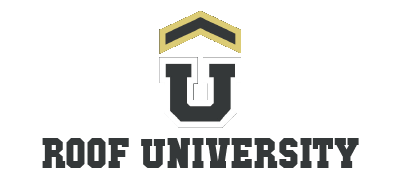Cedar is a versatile and aesthetically pleasing material for roof slopes, valued for its natural durability, resistance to decay, and distinctive appearance. Commonly used as shingles, shakes, or decking, cedar enhances the structural integrity of a roof while providing an enduring, rustic charm. Its lightweight and natural insulation properties make it an excellent choice for steeply sloped roofs in both residential and commercial applications.
What is Cedar Roofing?
Cedar roofing involves the use of cedar wood in the form of shingles, shakes, or planks to construct or enhance roof slopes. Cedar is a softwood, known for its high natural oil content, which gives it exceptional resistance to rot, insects, and moisture. Cedar is often used in roofing systems as both a structural element and a finished roofing material.
Types of Cedar for Roof Slopes
- Cedar Shingles:
- Description: Machine-cut, smooth, and uniform in size and thickness.
- Applications: Creates a clean, polished look for residential and commercial roofs.
- Best For: Homes with traditional or contemporary designs.
- Cedar Shakes:
- Description: Hand-split or sawn for a textured, rustic appearance.
- Applications: Adds a rugged, natural look to roof slopes.
- Best For: Rustic, historic, or natural-style homes.
- Cedar Planks:
- Description: Solid cedar boards used for decking or exposed beams in roof structures.
- Applications: Provides structural support or an aesthetic ceiling finish.
- Best For: Roof decking or decorative exposed rafters.
Benefits of Using Cedar on Roof Slopes
- Durability:
- Naturally resistant to rot, decay, and pests due to its high oil content.
- Aesthetic Appeal:
- Offers a warm, natural look that complements a variety of architectural styles.
- Lightweight:
- Reduces structural load, making it ideal for steep slopes.
- Weather Resistance:
- Withstands harsh weather, including heavy rain, snow, and UV exposure.
- Natural Insulation:
- Helps regulate indoor temperatures by reducing heat transfer through the roof.
- Eco-Friendly:
- Cedar is a renewable resource and biodegradable at the end of its lifespan.
- Longevity:
- Properly maintained cedar roofs can last 20–40 years or more, depending on the climate and exposure.
Challenges of Cedar on Roof Slopes
- Maintenance Requirements:
- Requires regular cleaning and treatments to maintain its appearance and resistance to moss and algae.
- Cost:
- Cedar is more expensive than many other roofing materials.
- Fire Risk:
- Untreated cedar is flammable, though treated options improve fire resistance.
- Color Changes:
- Over time, cedar weathers to a silvery-gray patina, which may not suit all design preferences.
Installation Process for Cedar Roofing
- Prepare the Roof Deck:
- Install a sturdy wood deck, ensuring it is level and free of debris.
- Install Underlayment:
- Use a waterproof underlayment to provide additional protection against moisture.
- Lay the Cedar Shingles or Shakes:
- Start at the eaves and work upward, overlapping each course to ensure water runoff.
- Fasten Securely:
- Use corrosion-resistant nails or staples, such as stainless steel or galvanized materials.
- Seal and Protect:
- Apply wood treatments or fire-resistant coatings if required by local building codes.
Maintenance Tips for Cedar Roof Slopes
- Inspect Regularly:
- Check for cracked, split, or loose shingles, especially after storms.
- Clean Debris:
- Remove leaves, moss, and algae to prevent moisture retention.
- Apply Treatments:
- Periodically treat with wood preservatives or sealants to enhance durability and resistance to moisture.
- Monitor for Pests:
- Inspect for signs of pest activity, particularly in untreated cedar.
- Trim Overhanging Branches:
- Prevent branches from shading the roof, which can promote moss and algae growth.
Applications of Cedar on Roof Slopes
- Residential Homes:
- Popular for single-family homes seeking a natural and sophisticated roofing option.
- Historic Buildings:
- Commonly used in restorations to maintain historical accuracy and charm.
- Rustic Cabins and Cottages:
- Ideal for properties where a rugged, natural aesthetic is desired.
- Custom Designs:
- Frequently used in custom-built homes for its beauty and performance.
Why Choose Cedar for Roof Slopes?
Cedar offers a unique combination of beauty, durability, and sustainability, making it an ideal choice for roof slopes. Its lightweight nature and resistance to decay make it particularly suited for steep roofs, where efficient water runoff is crucial. With proper care and maintenance, a cedar roof enhances the aesthetic appeal and functionality of any building, delivering timeless charm and lasting performance.
Conclusion
Cedar is a premium choice for roofing slopes, combining natural beauty with exceptional durability. Whether used as shingles, shakes, or planks, cedar provides a sustainable and reliable roofing solution that can withstand the test of time. For homeowners and builders looking for an eco-friendly and visually stunning material, cedar remains an enduring favorite.
